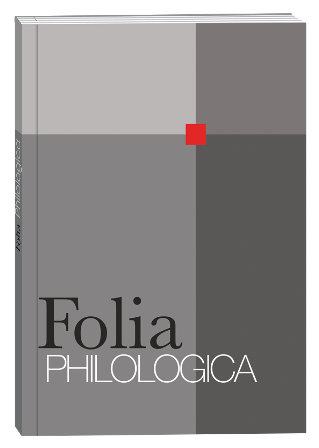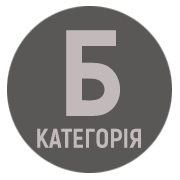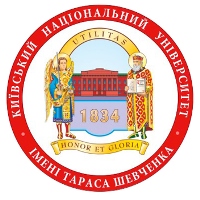СПІВВІДНОШЕННЯ ВІЗУАЛЬНИХ І ВЕРБАЛЬНИХ ЕЛЕМЕНТІВ У ТРАДИЦІЙНІЙ ТА ПОСТМОДЕРНІЙ СОЦІАЛЬНІЙ РЕКЛАМІ (НА МАТЕРІАЛІ АНГЛОМОВНОЇ СОЦІАЛЬНОЇ РЕКЛАМИ НА ТЕМАТИКУ COVID-19)
DOI:
https://doi.org/10.17721/folia.philologica/2021/1/8Ключові слова:
соціальна реклама, мультимодальність, міжмодальна когезія, COVID-19Анотація
Статтю присвячено аналізу взаємовідношень між текстом та зображенням як двома різними семіотични- ми модусами в рамках мультимодальних студій у традиційній та постмодерній англомовній соціальній рекламі на тематику COVID-19. Тенденція в дизайні реклами до збільшення ролі зображення й вербальної компресії впли- нула на міжмодальну когезію в тексті соціальної реклами. Традиційна соціальна реклама – це реклама, що ґрунтується на експліцитних когезивних зв’язках та семан- тичній надлишковості. Міжмодальна когезія в традиційній соціальній рекламі будується на ієрархічних відно- шеннях уточнення, послідовних відношеннях ілюстрації. Постмодерна соціальна реклама – це семіотично мінімалістичне вербально-візуальне поєднання, креолізо- ваний малоформатний текст із яскраво вираженими семантикою та символізмом; реклама, що пропонує бага- тозначне й мінімалістичне поєднання вербальних і візуальних знаків, які, на перший погляд, є інконгруентни- ми, незв’язними; міжмодальна когезія встановлюється реципієнтом через певні інтерсеміотичні припущення. Міжмодальна когезія в постмодерній візуально-центричній соціальній рекламі будується в основному на зв’язках розширення чи просторово-часового / причиново-наслідкового доповнення, завдяки яким виникає інконгруент- ність та мультимодальна напруга, що інтригують реципієнта та ефективніше залучають його до декодування повідомлення реклами. На рівні просторового синтаксису в постмодерній рекламі простежуються послідовні відношення анкорингу або чергування. У риторико-логічних відношеннях у постмодерній рекламі переважають відношення з випадковими, алюзивними зв’язками. Порівняно з традиційною рекламою, постмодерна реклама є менш директивною та експліцитною й вико- ристовує більш непрямий стиль комунікації. Особлива структура «постмодерної» візуально-центричної соціальної реклами визначається мультимодальністю, риторичною комплексністю, семантичною багато- значністю, інконгруентністю, прагматичною невизначеністю. Інтерпретація мультимодальних текстів постмодерної соціальної реклами залежить від денотативних та конотативних значень візуального та вер- бального компонентів, загальних та культурно-специфічних знань реципієнта, а також особливостей дис- курсу соціальної реклами. Теоретико-методологічні основи роботи поєднують праці з мультимодальності та вербально-візуальних зв’язків (Дж. Бейтмен, Г. Кресс та Т. Ван Леувен, Г. Штьокл, Г. Кейпл, Р. Мартінек та А. Селвей, Л. Макарук, В. Єфименко), а також з рекламного дискурсу (Г. Штьокл, С. Гісцінгер, С. Молнар, С. Булмер та М. Буханан- Олівер).
Посилання
Petrenko, D. A., Likhachev, E. V., & Chernyshova, M. V. (2020). Linguistic Means in Image of COVID-19 (German Political Discourse in Media). Nauchnyi Dialog, 7, 194–209. https://doi.org/10.24224/2227-1295-2020-7-194-209. (In Russian).
Semino, E. (2020). “Not Soldiers but Fire-fighters” – Metaphors and Covid-19. Health Communication, 36(1), 50–58. https://doi.org/10.1080/10410236.2020.1844989.
Dankova, N. S., & Krekhtunova, E. V. (2020). Media Representation of the Pandemic: a Metaphorical Image of War (based on American Newspapers). Nauchnyi Dialog, 1(8), 69–83. https://doi.org/10.24224/2227-1295-2020-8-69-83. (In Russian).
Pervukhina, S. V., & Rood’, E. E. (2020). Means of Expression in the Newspaper Style (on the Example of Coronavirus Articles). Humanitarian Researches, 75(3), 98–104. https://doi.org/10.21672/1818-4936-2020-75-3-098-104. (In Russian).
Kupina, N. A. (2020). Coronavirus Pandemic: Metaphoric Diagnostics of Anxious Reality in the Media Texts. Izvestia of Ural Federal University. Series 1. Issues in Education, Science and Culture, 26(3), 5–13. https://doi.org/10.15826/izv1.2020.26.3.044. (In Russian).
Serebriakova, S. V., & Milostivaya, A. I. (2020). Linguistic Portraiting of the Covid-19 Pandemics in Russian and German Press. Humanitarian Sciences and Legal Studies, 1, 202–209. (In Russian).
Gulyaeva E. A., Klyukina Yu. V., Davydova E. I., & Mordovina T. V. (2020). Representation of the Concept "Pandemic" in Modern English-Language Media. The World of Science, Culture, Education, (6 (85)), 616-619. (In Russian).
Kameneva, V. A., Rabkina, N. V., Araeva, L. A., Gorbacheva, O. N. (2018). Nomenclature of Visual Stylistics: Visual Stylistic Means in Social Advertising. Political Linguistics, 3, 96-105. (In Russian).
Karataeva, M. V. (2014). Semiotics of Virtual Communication (based on the modern English language). Thesis for a Candidate degree in Philology. Taras Shevchenko National University of Kyiv, Kyiv. (In Ukrainian).
Tsyliuryk, T. V. (2016). Discourse of English Virtual Counteradvertising as the Object of Linguistic Research. Young Scientist, 8(35), 313-318. (In Ukrainian).
Biliuk, I. L. (2016). City Branding in English Communication: Verbal and Visual Components. Thesis for a Candidate degree in Philology. V. N. Karazin National University of Kharkiv, Kharkiv. (In Ukrainian).
Kostromina, T. A. (2018). Fascination in Creolised Tetxs in English-Language Social Advertising. Verhnevolzhski Philological Bulletin, 3, 145-154. (In Russian).
Kress, G., and van Leeuwen, T. (2001). Multimodal Discourse: The Modes and Media of Contemporary Communication.
Bateman, J.A. (2014). Text and image. A Critical Introduction to the Visual/Verbal Divide.
Stöckl, H. (2004). In between Modes. Perspectives on Multimodality, 9–30. https://doi.org/10.1075/ddcs.6.03sto.
Stöckl, H. (2009). The Language-Image-Text – Theoretical and Analytical Inroads into Semiotic Complexity. AAA: Arbeiten Aus Anglistik Und Amerikanistik, 34(2), 203–226. http://www.jstor.org/stable/26430902.
Yefymenko, V. A. (2016). Correlation between Visual and Verbal Elements in Fairy-Tale Narrative. Taras Shevchenko National University of Kyiv Bulletin, Philology, 1(49), 34–38. (In Ukrainian).
Yefymenko, V. (2017). Text-image Relationships in Contemporary Fairy Tales. Linguistics Beyond and Within, 3, 216–228.
Makaruk, L. (2018). Multimodality and Polycodeness in Modern Linguistic Studies: Schools, Figures and Approaches. Current Issues of Foreign Philology, 9, 133–142. (In Ukrainian).
Stöckl, H. (2020). Multimodality and Mediality in an Image-Centric Aemiosphere – A Rationale. In C. Thurlow, C. Dürscheid, & F. Diémoz (Eds.), Visualizing Digital Discourse: Interactional, Institutional and Ideological Perspectives, 189–202.
Stöckl, H. (2008). Was hat Werbung zu verbergen? Kleine Typologie des Verdeckens. In: Pappert, S., Schröter, M., Fix, U. (eds.). Verschlüsseln, Verbergen, Verdecken, in öffentlicher und institutioneller Kommunikation, 171–196.
Stöckl, H., Caple, H., & Pflaeging, J. (Eds.) (2020). Shifts towards Image-Centricity in Contemporary Multimodal Practices: Insights from Social Semiotic Approaches.
Gieszinger, S. (2000). Two Hundred Years of Advertising in The Times. The Development of Text Type Markers. In: Ungerer, F. (ed.) English Media Texts Past and Present, 85–109.
Stöckl, H. (2017). The Multimodal Enigmatic Advertisement: "En-riddling" as a Rhetorical Strategy in Commercial Persuasion. In Handler, P., Kaindl, K., & Wochele, H. (Eds.), Ceci n`est pas une festschrift, 69–81.
Martinec, R. and Salway, A. (2005) A system for image-text relations in new (and old) media. Visual Communication, 4(3). 337–372.
Makiedonova, O. D. (2017). Linguostylistic Organization and Pragmatic Functioning of the English Advertising Discourse. Thesis for a Candidate degree in Philology. Zaporizhzhia National University, Zaporizhzhia. (In Ukrainian).
Kazakova, L. P. (2013). Psychological Patterns of Public Service Advertising Perception. Bulletin of the Moscow State University of Publishing, 8, 181–194. (In Russian).
Dzamic, L. (2001). No-Copy Advertising.
Molnar, S. (2018). Advolution. A Systemic Functional Perspective on the Diachronic Development of Advertising since the 17th century. (Unpublished doctoral dissertation). University of Salzburg, Salzburg.
Caple, H. (2008). Intermodal Relations in Image-Nuclear News Stories. In Len Unsworth (ed.), Multimodal semiotics. Functional analysis in the context of education, 125–138.
Caple, H. (2013). Photojournalism: A Social Semiotic Approach.
Bulmer, S., & Buchanan-Oliver, M. (2006). Visual Rhetoric and Global Advertising Imagery. Journal of Marketing Communications, 12(1), 49–61.
Meyer, U. (2010). Poetik der Werbung.
Tsyliuryk, T. V. (2020). "Concealing" and "Revealing" as Multimodal Strategies in the British and German Public Service Advertising (PSA). Science and Education a New Dimension. Philology, VIII(70), Issue: 235, 49–53.
Engebretsen, M. (2012). Balancing Cohesion and Tension in Multimodal Rhetoric. An Interdisciplinary Approach to the Study of Semiotic Complexity. Learning, Media and Technology, 37(2), 145–162.









